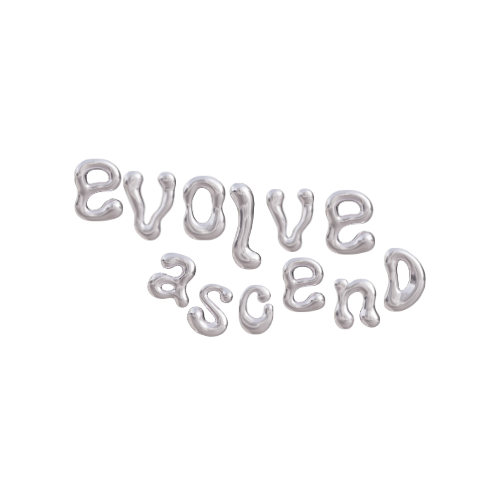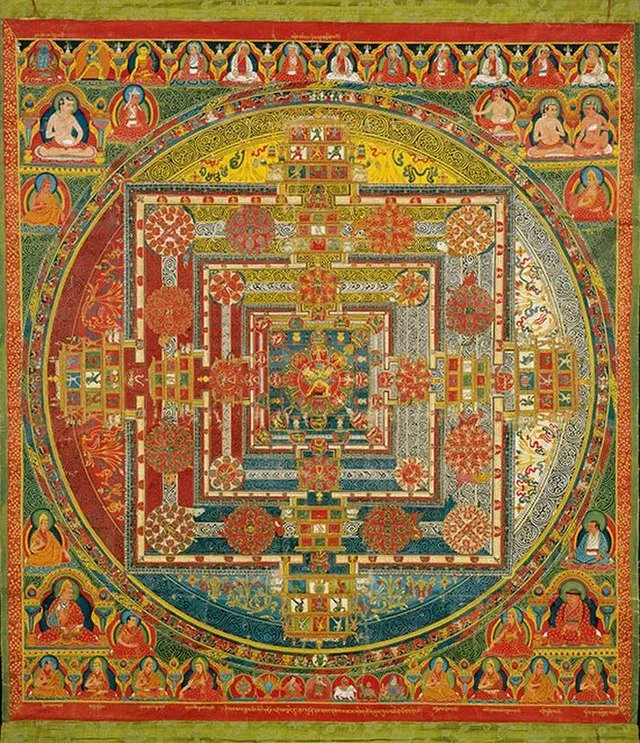An Overview of the Tantric Kalachakra Teachings
Kalachakra (Kālacakra), a term rich in meaning within both Vajrayana Buddhism and Hinduism, translates to "wheel of time" or "time cycles." This concept is central not only as a philosophical and spiritual symbol but also names a collection of Buddhist teachings and a significant lineage within both Indian and Tibetan Buddhism. Classified within the highest class of tantra, anuttara-yoga, Kalachakra spans a broad spectrum of spiritual and temporal teachings.
The term Kalachakra refers to both a revered tantric figure or yidam in Vajrayana Buddhism and the extensive teachings and practices of the Kālacakra tradition. Originating in India, this tradition has had a vibrant history, particularly in Tibet. It encompasses a wide array of teachings on cosmology, theology, philosophy, sociology, soteriology, myth, prophecy, medicine, and yoga. Through a narrative that intertwines cosmic and historical events with individual spiritual processes, the Kalachakra teachings aim for the yogic transformation of body and mind into the state of perfect Buddhahood.
Rooted in Mahayana Buddhism's non-dualistic view, strongly influenced by Madhyamaka philosophy, the Kalachakra tradition also integrates insights from various Buddhist and non-Buddhist traditions, including Vaibhāṣika, Kashmir Shaivism, Vaishnavism, and Samkhya. Tradition holds that the Kalachakra teachings were imparted by Gautama Buddha himself in India. Historical research indicates that the foundational Sanskrit texts of the Kalachakra tradition were developed in the early 11th century, with key texts like the Śrī Kālacakra and the Vimalaprabhā commentary finalized between 1025 and 1040 CE.
Today, Kalachakra continues to be a vibrant aspect of Tibetan Buddhism, especially within the Jonang tradition. Its teachings and initiations, including those conducted by notable figures such as the 14th Dalai Lama, Tenzin Gyatso, continue to attract widespread interest and participation, highlighting its enduring relevance and appeal.
Liberation from Time through Kalachakra Practices
The Kalachakra Tantra offers a path to liberation from the cyclic nature of time and karma. Through a series of meditative practices within this path, it is believed that practitioners can transcend the limitations of the external and internal cycles.
This liberation does not deny the existence of time but frees individuals from the adverse effects of time's cyclical ravages. Initiation into Kalachakra begins this transformative journey, leveraging the subtlest levels of the mind to perceive reality directly, thus eliminating confusion and its resultant instincts.
The historical spread of Kalachakra teachings, originating two millennia ago in southern India, emphasizes the system's tested and enduring relevance. It found prominence in various regions, from the monastic universities of the Gangetic plain to the courts of Mongolia and beyond, showcasing its wide acceptance and adaptability across cultures. Notably, the Kalachakra's association with the Dalai Lamas and its significant role in the rituals and practices of Tibetan Buddhism highlight its profound impact on spiritual practices and its contribution to promoting world peace.
Kalachakra's Role in World Peace and Enlightenment
The Kalachakra initiation is a spiritual event that attracts large crowds due to its rich history of inclusivity and its promise of uniting practitioners against adversities. The teachings of Kalachakra emphasize the interconnectedness between personal actions and global harmony, which resonates with the contemporary quest for peace and spiritual awakening. The ultimate goal of receiving the Kalachakra empowerment is not just to connect with a future golden age but to achieve enlightenment in this lifetime for the benefit of all beings.
Shambhala, a central theme in Kalachakra teachings, represents an ideal realm conducive to spiritual practice. While physical journeys to Shambhala are depicted up to a certain point, the true path to this fabled land is a spiritual one, aiming for enlightenment and the betterment of all.
Preparing for Kalachakra Empowerment
Preparation for receiving Kalachakra empowerment involves more than traditional prostrations or mantra repetitions; it requires a foundational understanding of lamrim (the gradual path to enlightenment) and the principal Mahayana attitudes: renunciation, bodhichitta, and an understanding of voidness.
These preparatory steps ensure practitioners are ready to embark on the transformative journey offered by Kalachakra. The aim is a profound understanding of reality and liberation from the cycles of time and karma.
The Empowerment Experience and Its Implications
The Kalachakra initiation, which lasts several days, includes taking vows and engaging in complex visualizations. This leads to a deep purification process and enhances one's potential for spiritual success. This initiation is not merely a ritual but a profound commitment to walking this path.
In summary, the Kalachakra system provides a comprehensive framework for understanding the cycles of time and karma and offers a path to liberation from these cycles. Through its historical spread, association with world peace, and detailed preparatory practices, Kalachakra empowers individuals to transcend temporal limitations, aiming for enlightenment and the ultimate betterment of all beings.


